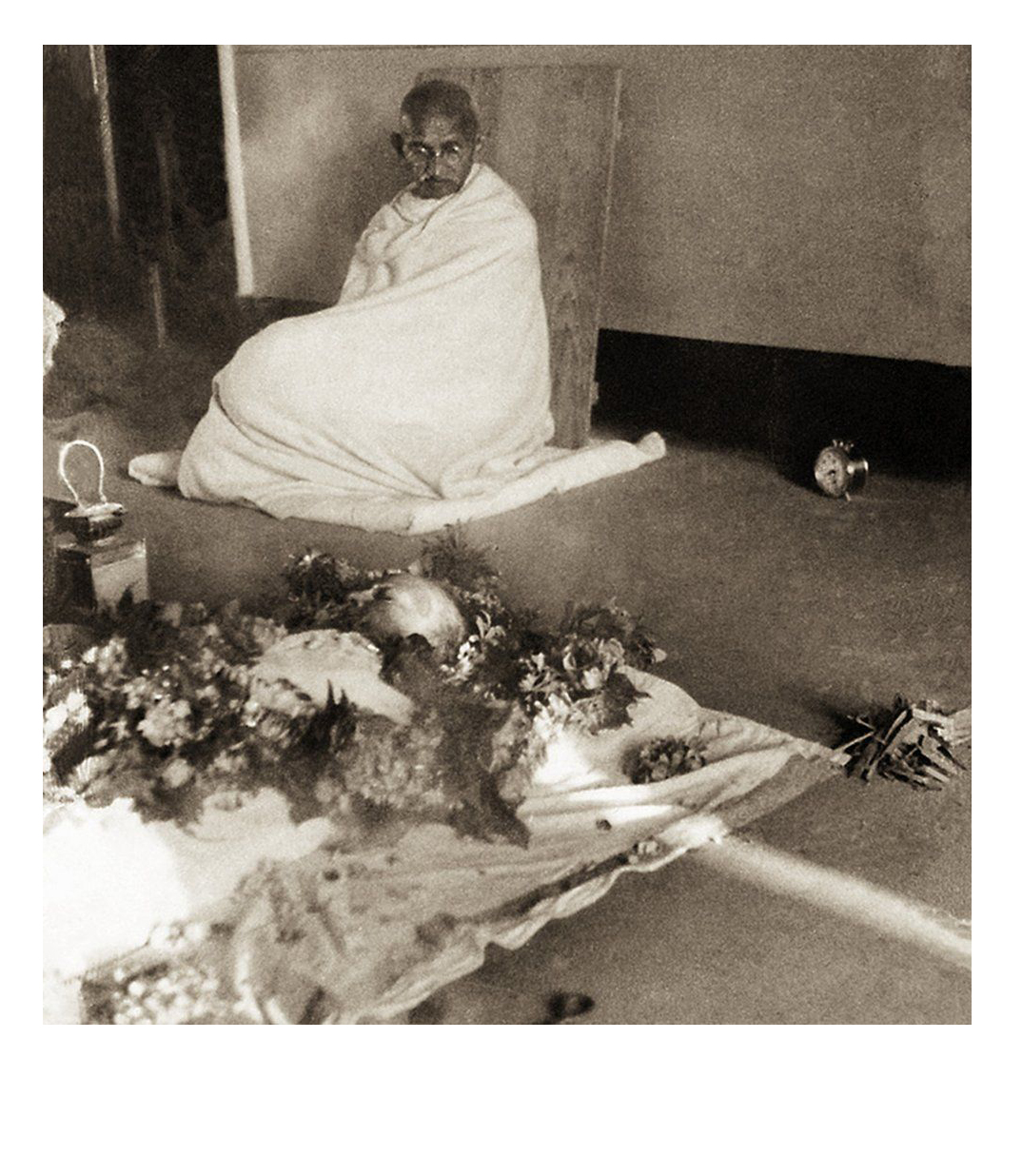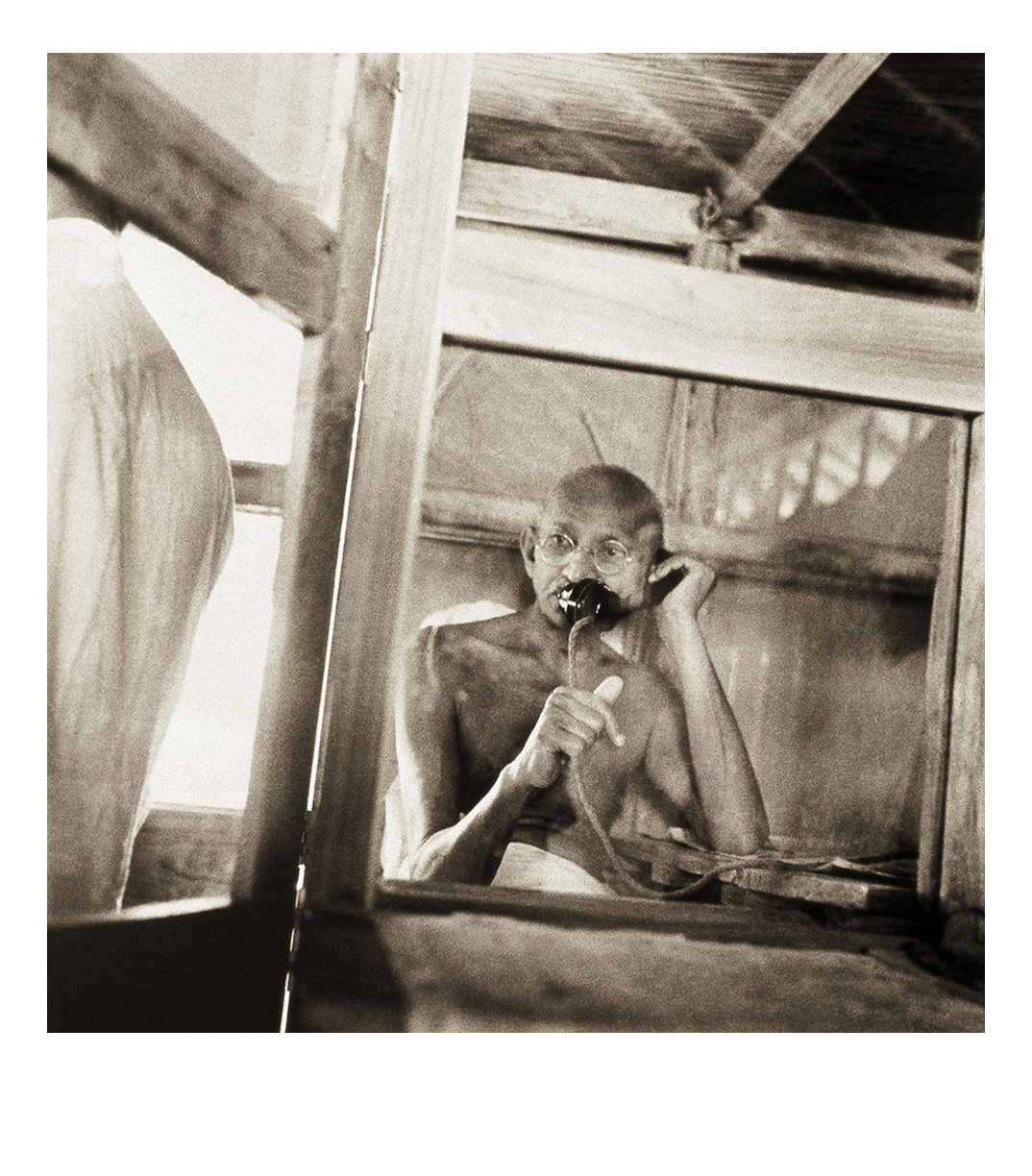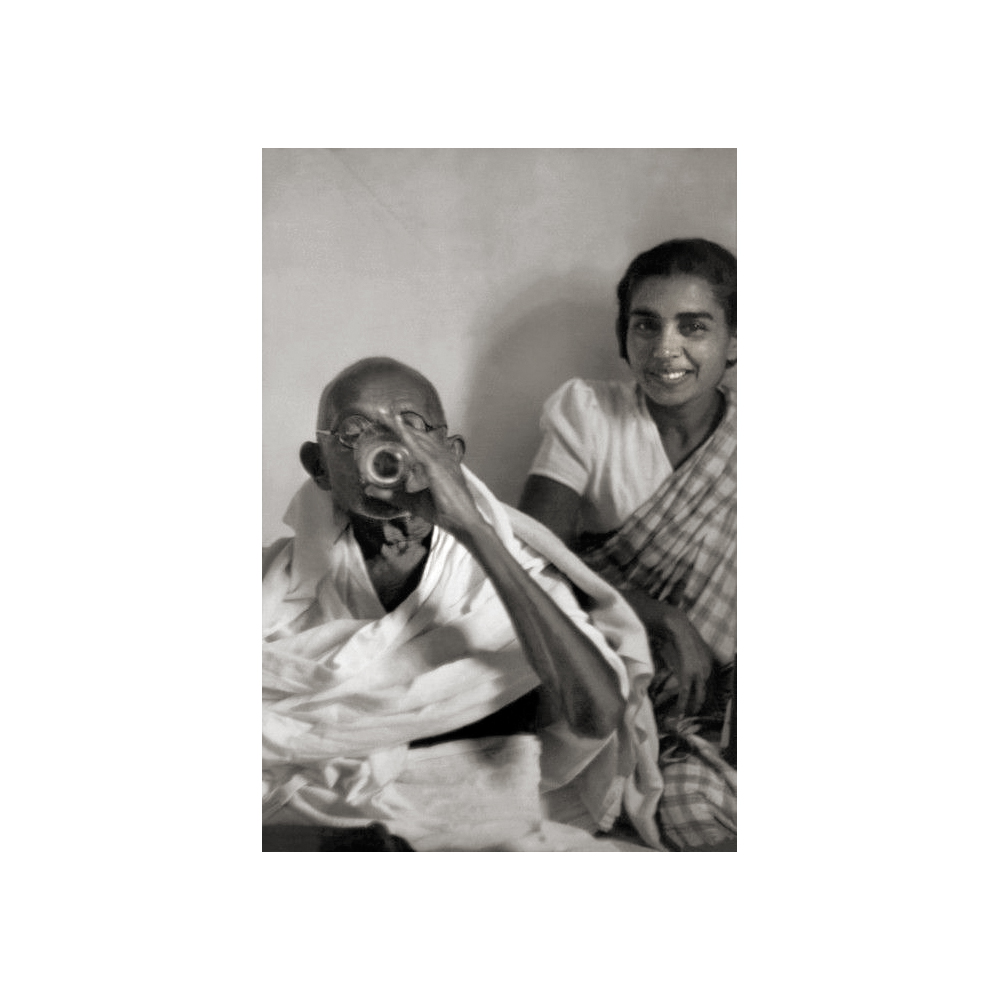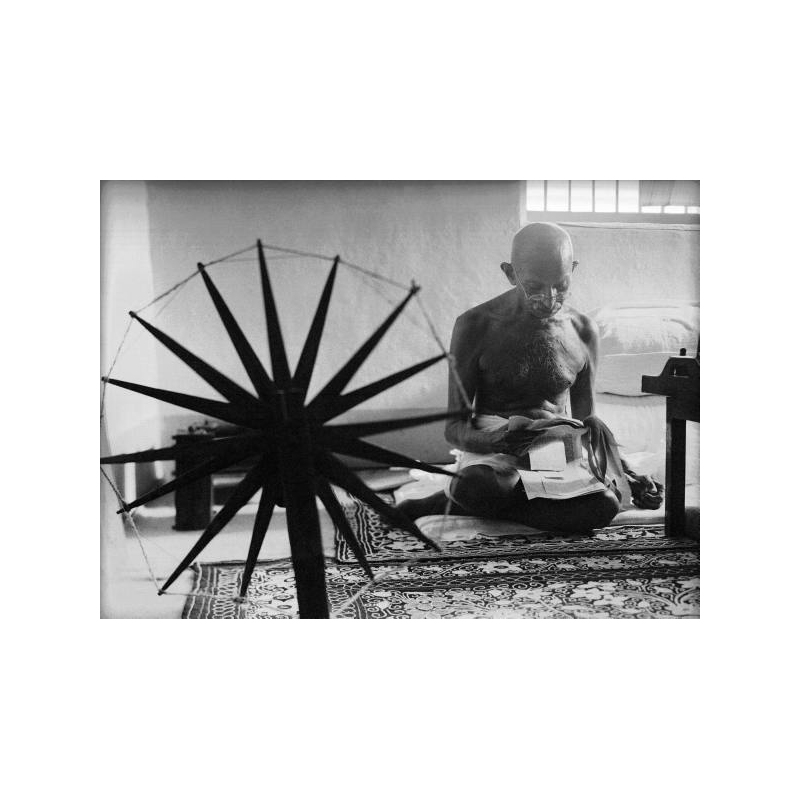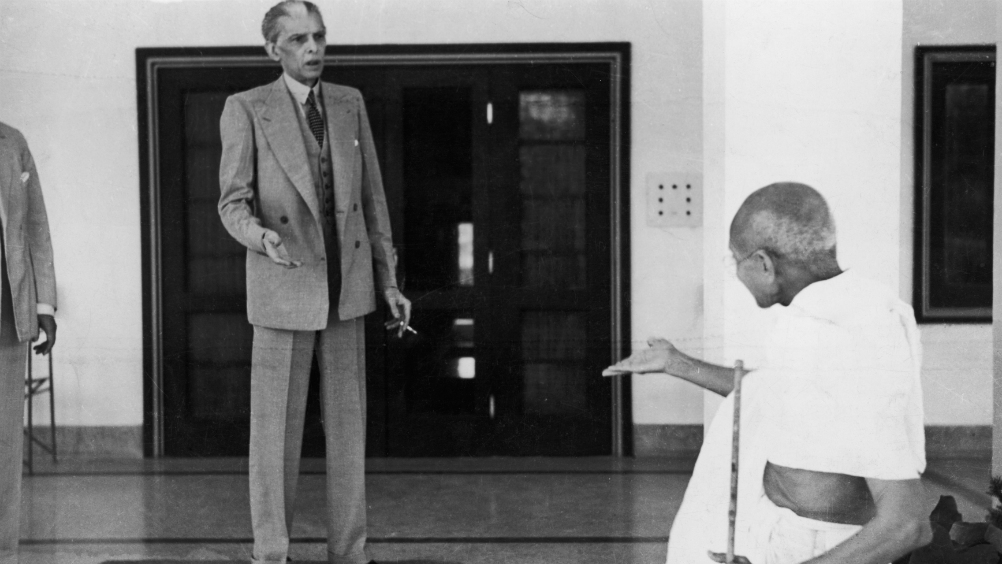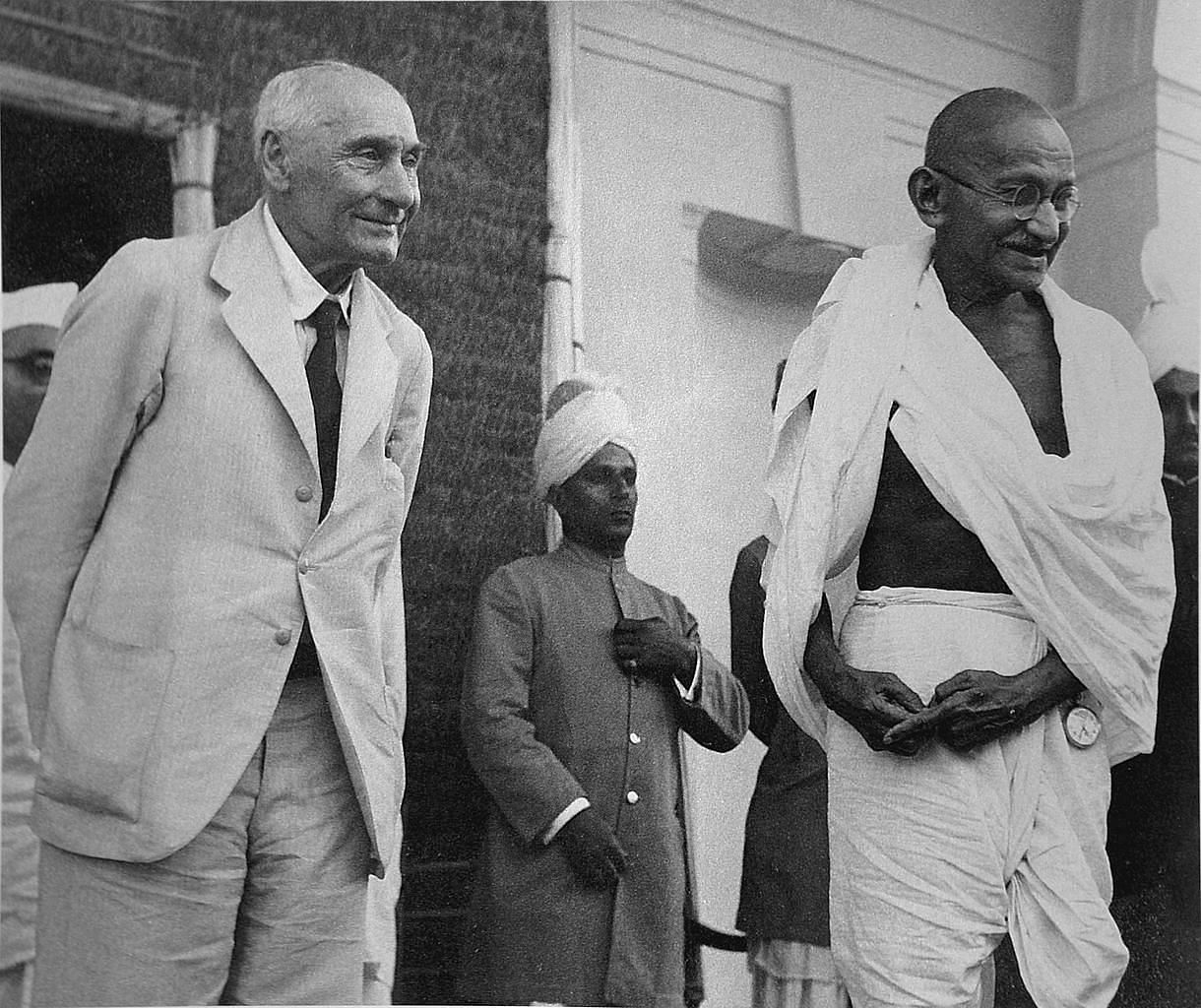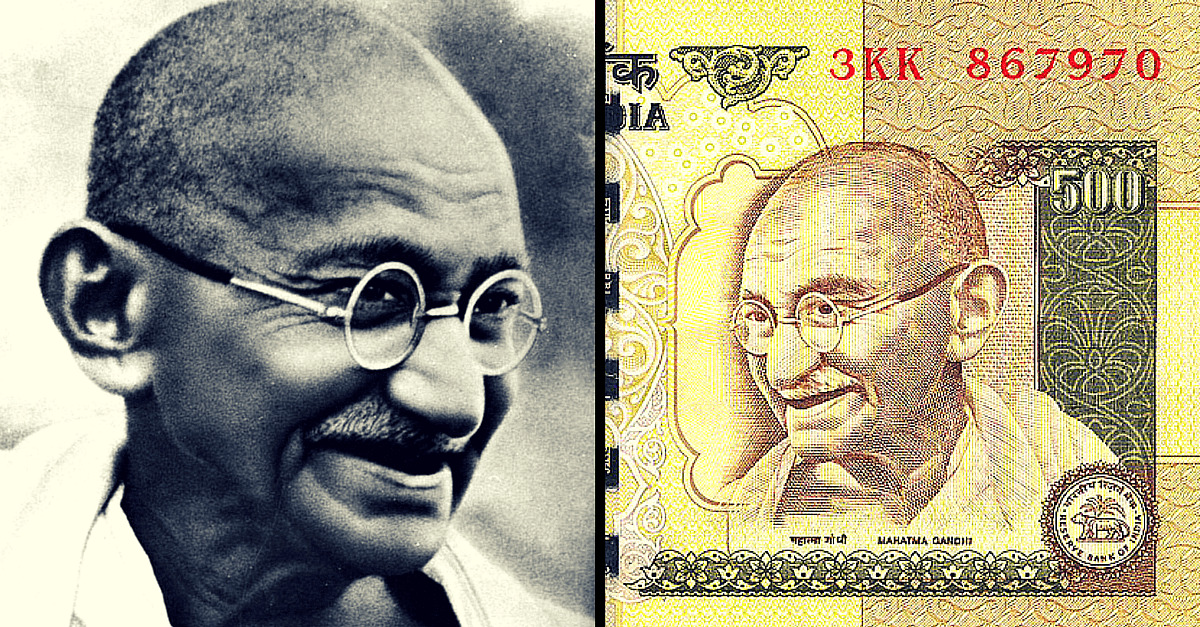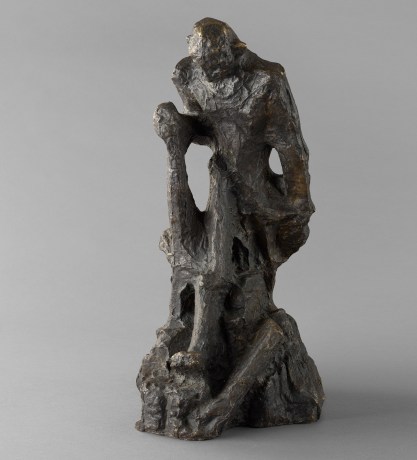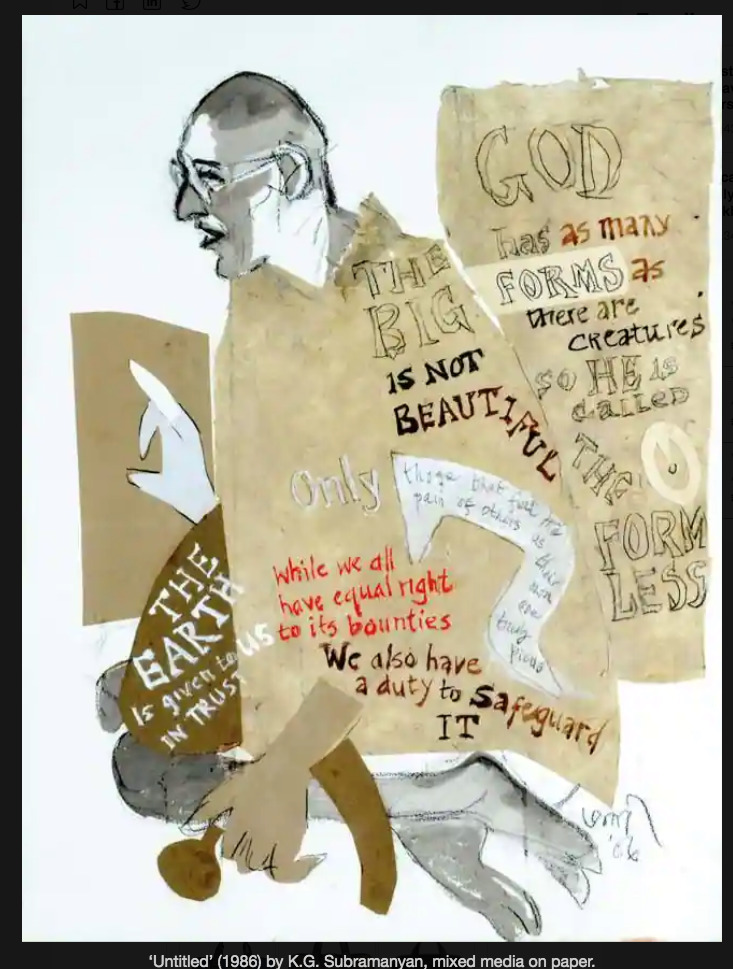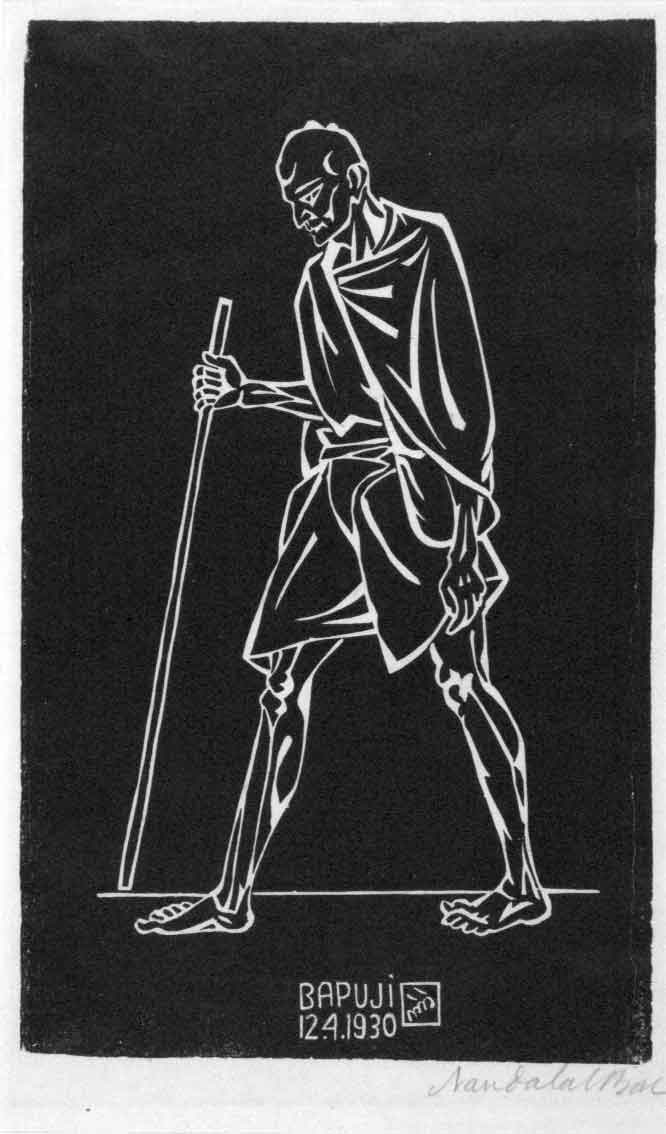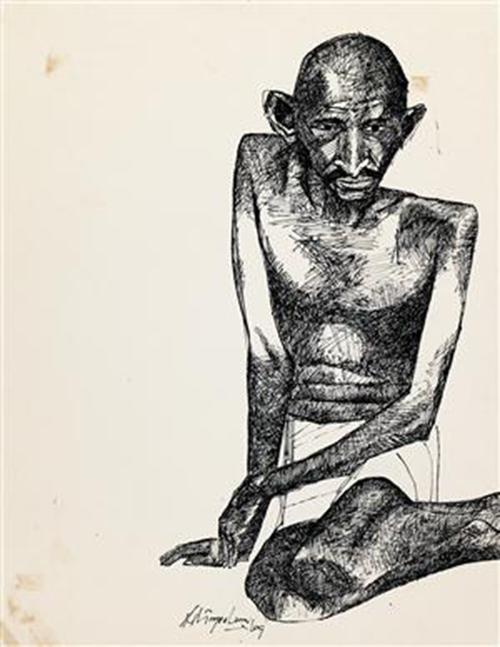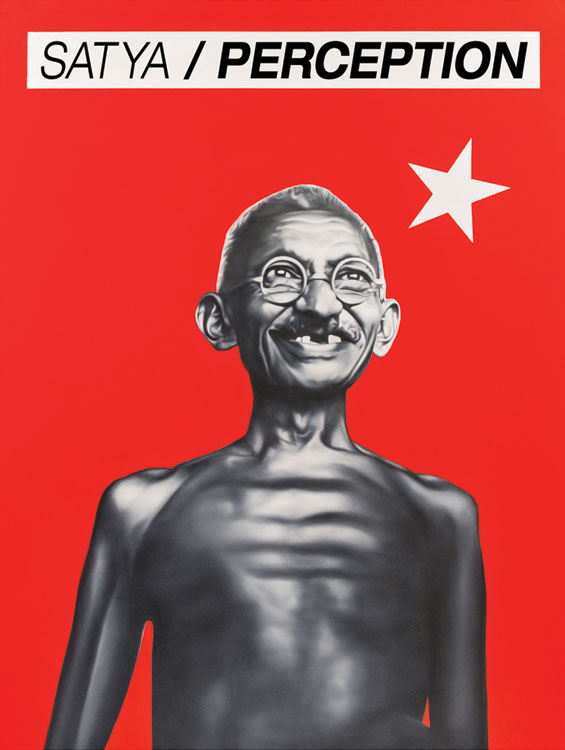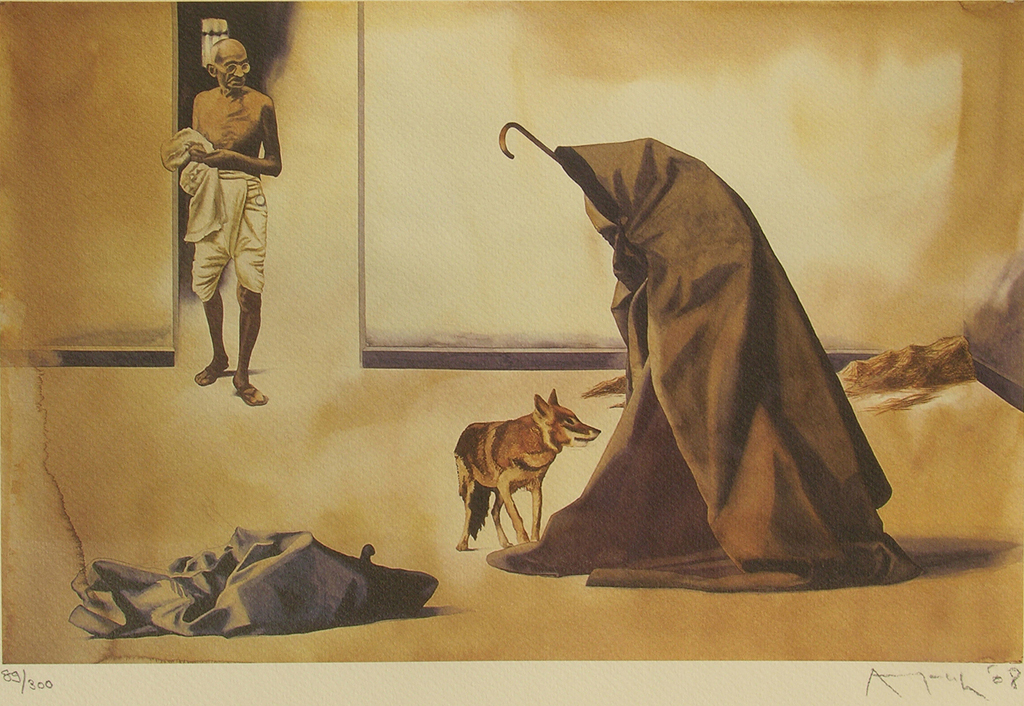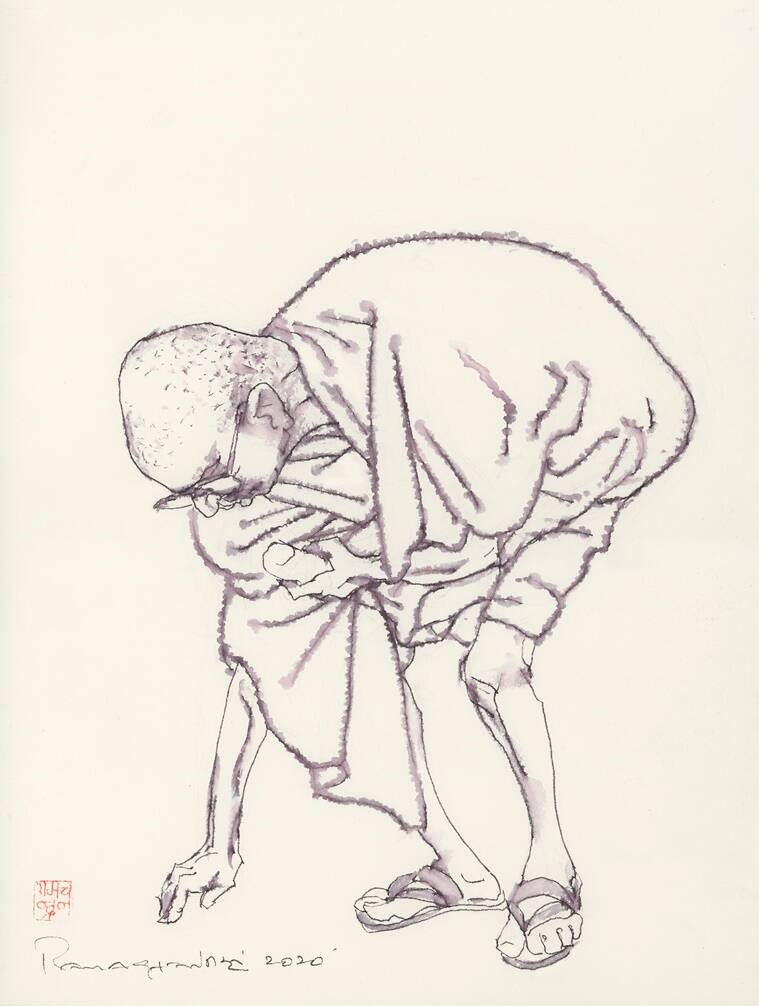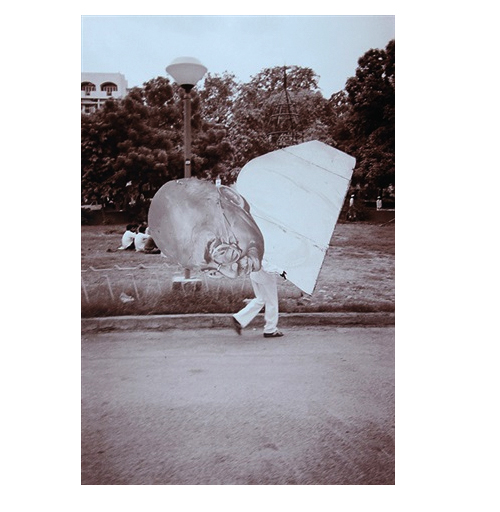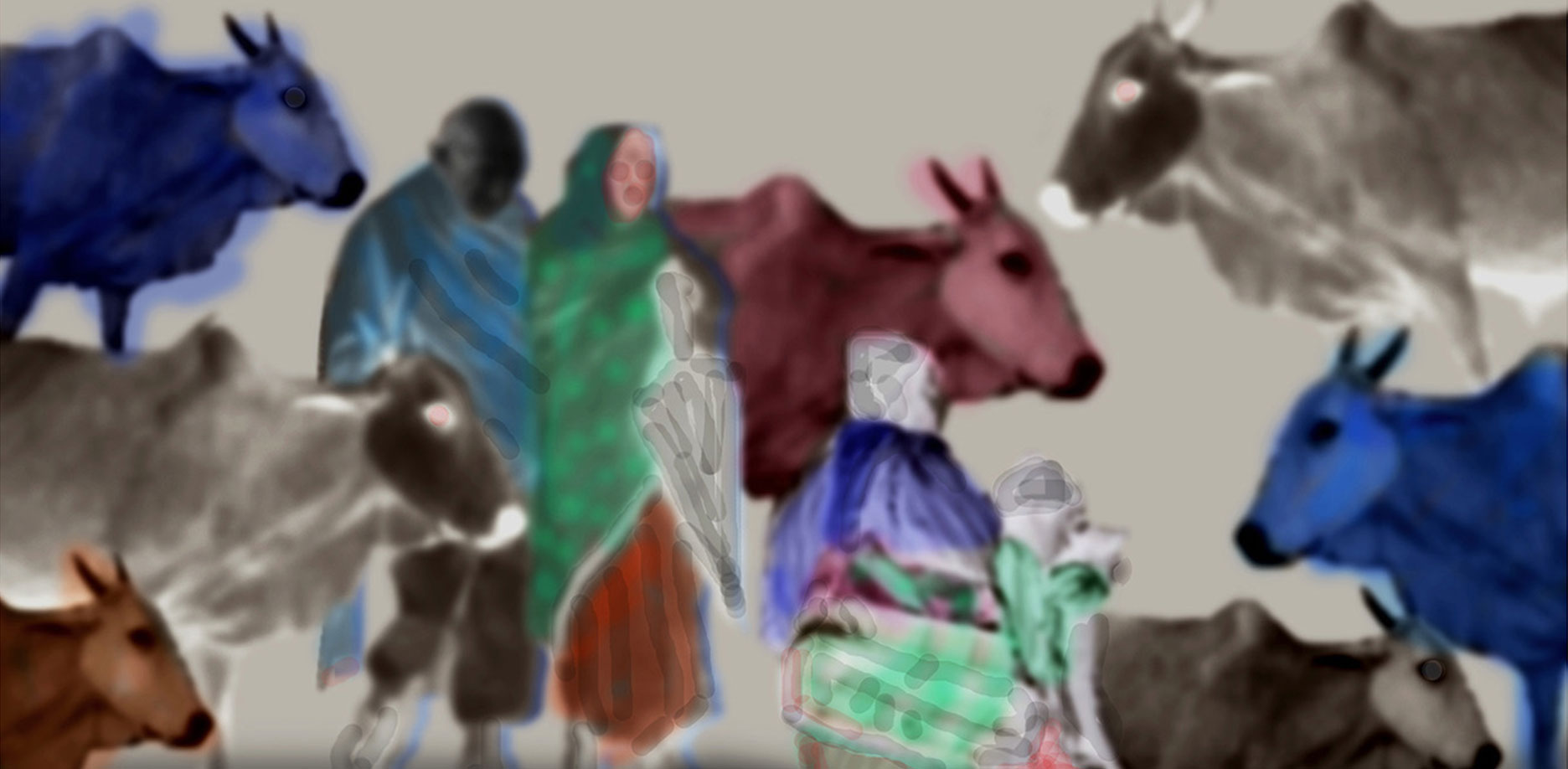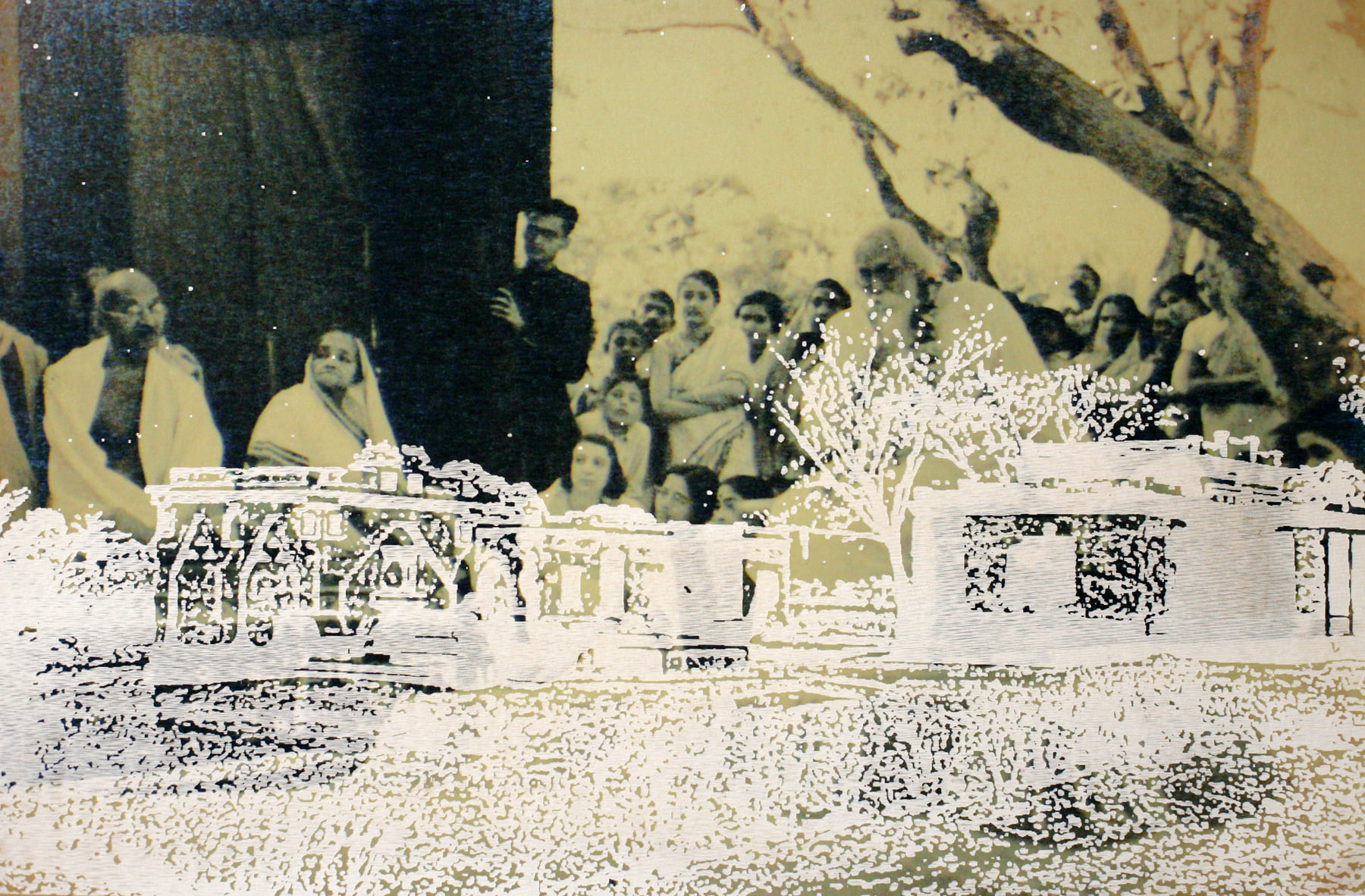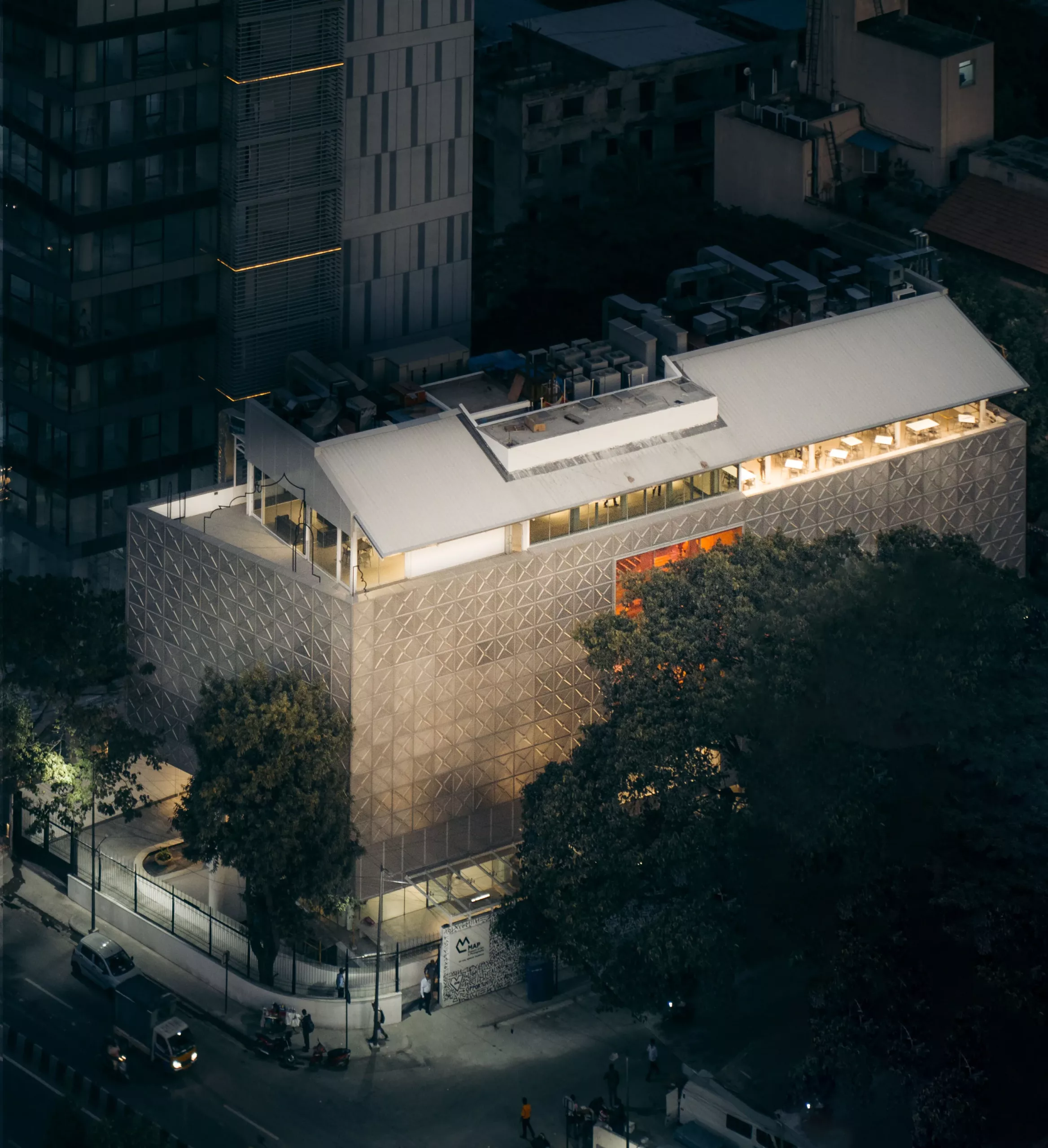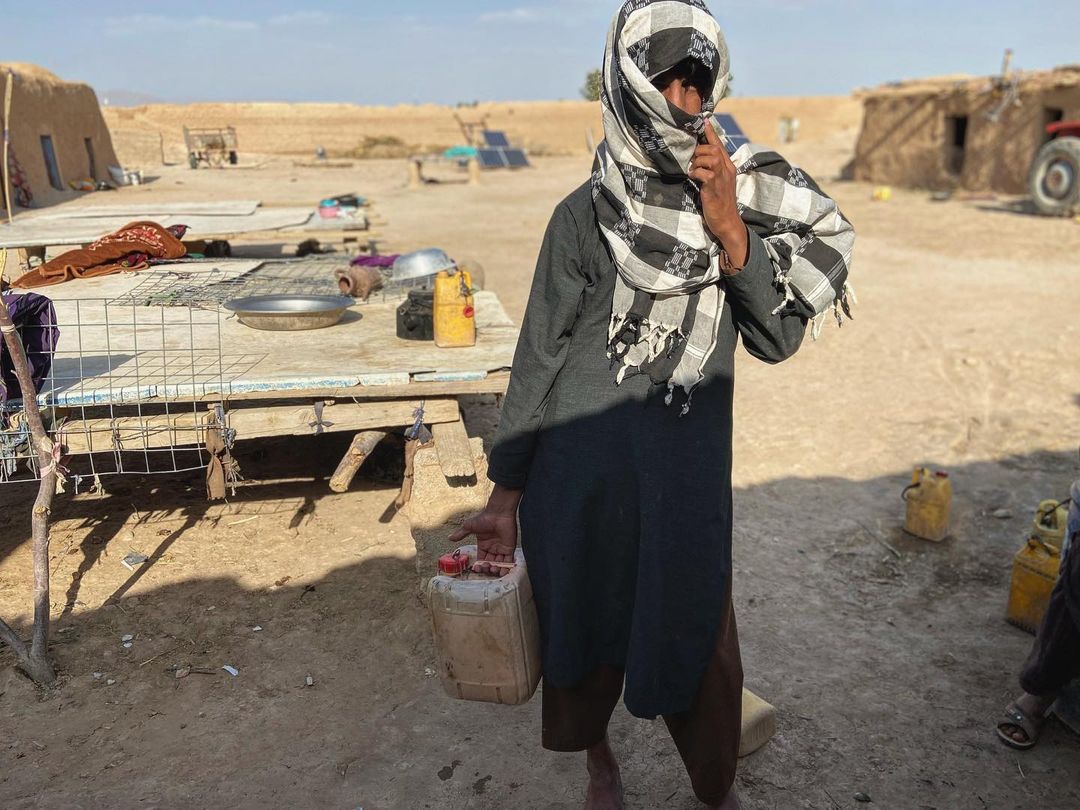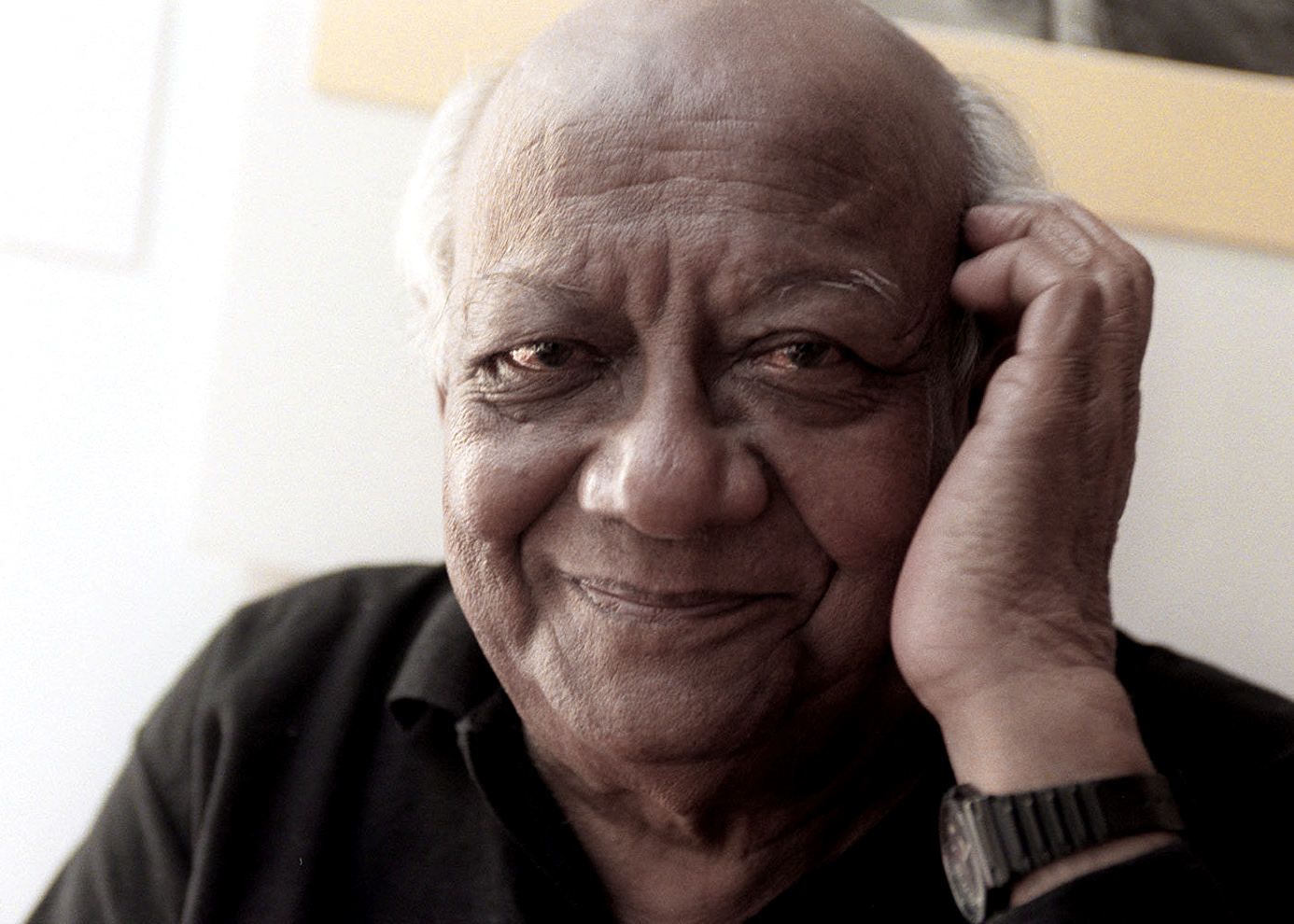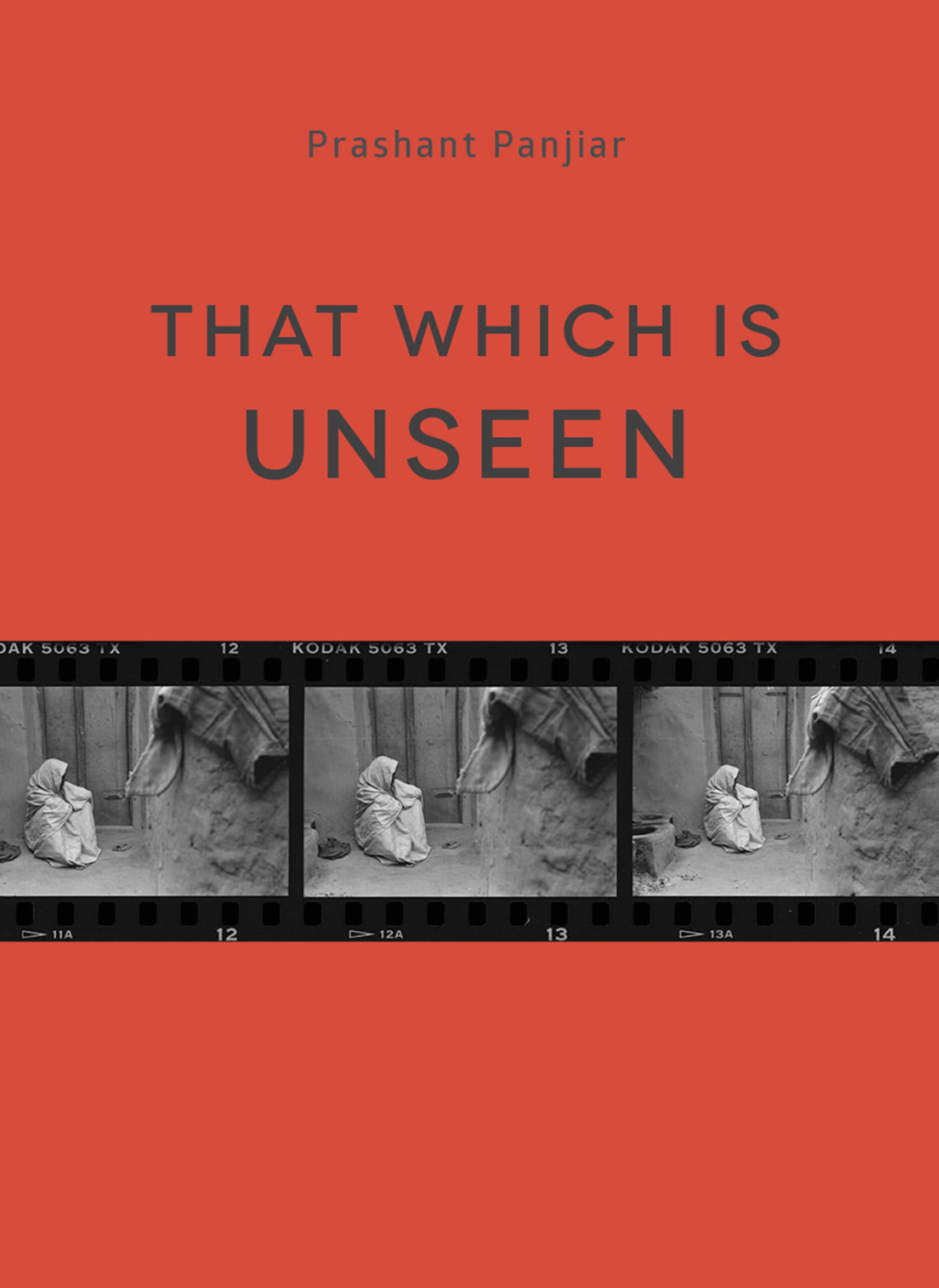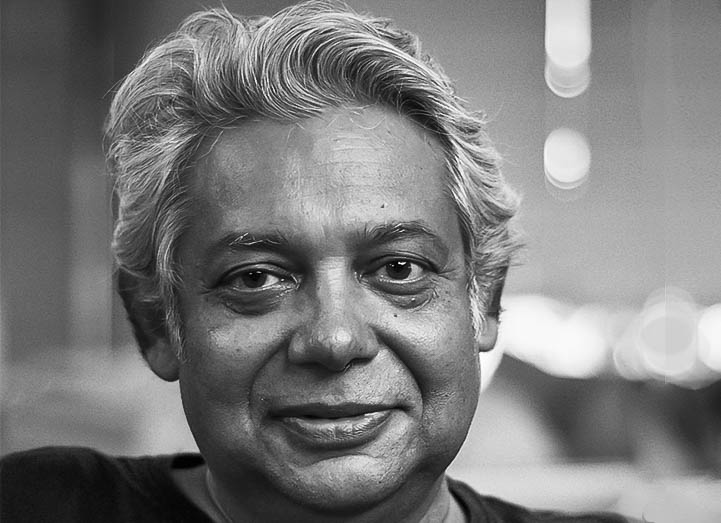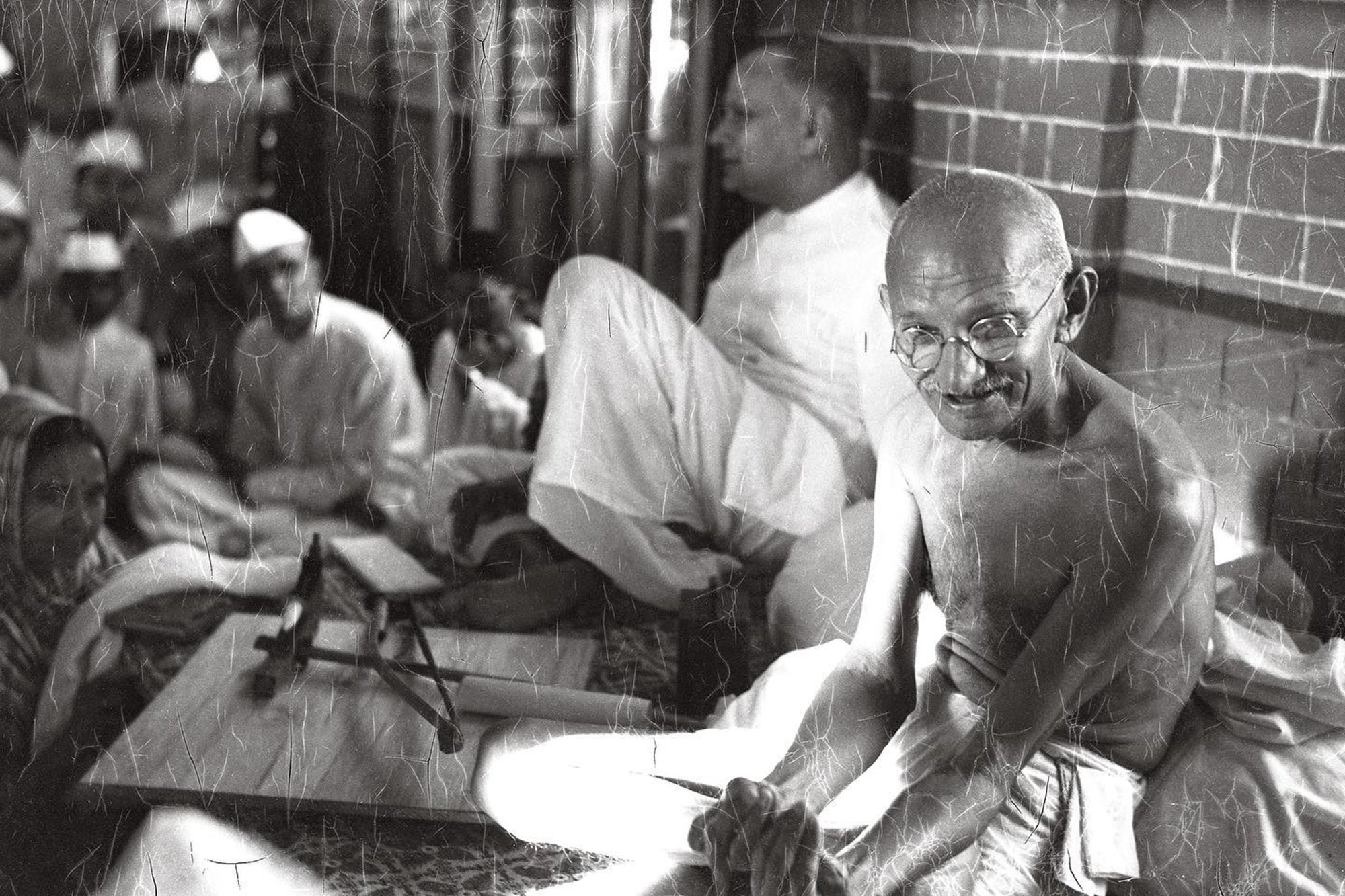
Gandhi © Kulwant Roy / India Photo Foundation | Image source internet
Celebrating Resistance, 152 years of Mahatma Gandhi
Controversies apart, Mahatma Gandhi is a contemporary global symbol of resistance and communal harmony. Gandhi was influenced by the ideologies of Buddha and Mahaveera, as well as modern philosophers such as Socrates and Tolstoy. Gandhi continuously challenged himself, often negating even his earlier beliefs. His political views on secular India are much more valuable in today’s context. Gandhi’s vision of the secular state is a place where religious values and discourses are cherished and respected in all spheres of life, the public as well as the private. This vision celebrates a pluralistic lifestyle and indeed, no single religion is encouraged to dominate the others. It is this vision of India that led him to resist Hindu Nationalist ideas, even while Pakistan was founding a Nation-state based on religious beliefs. He dreamed of an India where every individual could practice their religion freely and fairly. His India was a land that stands united despite the differences.
It will do well to remember Gandhi and his vision of modern India, especially now, as Indian identity is being redefined – often at the expense of freedom of expression and harmonious co-existence. These times demand a totally different form of resistance – one that balances one’s right to inner exploration and outer expression; a revolution that transforms man-made boundaries; a movement that unites our urge for a peaceful existence. On Gandhi’s 152nd birth anniversary, PhotoMail remembers him through these everlasting imageries. There are hundreds of photographs of Gandhi, often the author is unknown. Here is a collection of photographs by known Indian and International photographers, as well as his imageries by artists.
Image 1: Mahatma Gandhi telephoning from the office hut in Sevagram Ashram, 1938 | Image 2: Gandhi draped in a shawl, looking at Kasturba after she passed away in February 1944. Photograph by Kanu Gandhi/© The Estate of Kanu Gandhi
Kanu Gandhi (1928 – 2016), Mahatma Gandhi’s grandnephew came to live with him in the Sevagram Ashram and became his lifelong follower. Gandhi allowed Kanu to photograph him on the condition that no flash would be used and he would never be asked to pose. Thirdly, he was not allowed to use ashram money for his photographic practice. Though some of Kanu Gandhi’s images are well known, he was never credited for them. In 2017, an exhibition titled Kanu’s Gandhi was shown at the Chhatrapati Shivaji Maharaj Vastu Sangrahalaya. The show was curated by Prashant Panjiar and Sanjeev Sait.
GANDHI, just before breaking his fast, Birla House, Delhi © Henri-Cartier Bresson, 1948
French photographer Henri-Cartier Bresson (1908 – 2004) had visited India to capture the independence movement, its past and present at a time of rapid social change. However, he witnessed the unrest of the partition of the country into Hindu India and Muslim East and West Pakistan. At the centre of these upheavals was Mahatma Gandhi, who, after campaigning for India’s independence, was now protesting for the end of the violence between Hindus and Muslims. Cartier-Bresson had exclusive access to Gandhi, recording the activist’s hunger strike in protest of riots in which millions died. He had shot iconic images of Gandhi breaking the fast as well as a few portraits. The next day, January 30, 1948, Gandhi was assassinated and Bresson took what is today the most important document of the aftermath of Gandhi’s death. Bresson was the only photographer to document the drastic events that unfolded post-assasination.
Gandhi and His Spinning Wheel © Margaret Bourke-White / The LIFE Picture Collection, 1948
In 1946, during the run-up to the historic 1947 partition and independence from Great Britain for both India and Pakistan, American photojournalist Margaret Bourke-White (1904 – 1971) spent time in India working on a feature, titled “India’s Leaders,” that would run in the May 27, 1946, issue of LIFE. She made hundreds of photographs, including many of Gandhi himself: with his family; at his spinning wheel; at prayer. More than a dozen of her pictures ran in the “Leaders” article in the May ’46 issue. Only two were of Gandhi, and neither of them was the well-known spinning-wheel picture.
After Gandhi’s assassination in January 30, 1948, the photograph was given pride of place in LIFE’s multiple-page tribute to Gandhi. Filling a half-page atop the article, “India Loses Her ‘Great Soul,’” the picture serves as a stirring visual eulogy to the man and his ideals (Ref: Life: Gandhi and His Spinning Wheel: The Story Behind an Iconic Photo)
Gandhi in a third-class railway carriage, traveling to the Simla Conference of 1946 © Sunil Janah
Sunil Janah (1918 – 2012) was an Indian photojournalist and documentary photographer. He captured history in the making, documenting the people’s struggles against colonialism and the emergence of independent India after 1947. Born in Assam in 1918, Sunil Janah was educated at St. Xavier’s and Presidency colleges in Calcutta. He was part of the communist movement and photography was a hobby until he came to prominence for the pictures of the Bengal Famine he had taken for the Communist party in 1943. He had accompanied American photojournalist Margaret Bourke-White in various assignments including the India-Pakistan partition and its violence. Janah had taken several photographs of the leaders of India, including Gandhi, Nehru and Patel.
Mahatma Gandhi and Jinnah in a heated conversation; a well-known photograph recently attributed to Kulwant Roy | Source: Wikipedia
Indian photojournalist Kulwant Roy’s (1914 – 1984) prints and negatives remained forgotten in boxes for over twenty-five years after his death, until their inheritor Aditya Arya, a photographer himself, began cataloging them. In the process, he discovered a rare and valuable visual archive, including many unpublished pictures, of a momentous era in India’s history. Kulwant Roy’s vast archive shows India transitioning from colonial dominance to freedom and has historical images including that of Gandhi.
Image 1: Gandhi standing next to Lord Frederick William Pethick-Lawrencey, Photographer Unknown, 1946 | Image 2: Cropped image of Gandhi printed on Rs
The smiling Gandhi photograph printed in Indian Rs was actually cropped from another famous photograph of Gandhi standing next to Lord Frederick William Pethick-Lawrence, a British Politician. It was taken in the year 1946 at the former Viceroy House, which is now known as the Rashtrapati Bhavan. The photographer is unknown till now. Known as the Mahatma Gandhi series, RBI released these currencies in the year 1996. The 500 Rs bill depicts Gyarah Murti Statue by Deviprasad Roychowdhury (1899-1975). This is installed near President’s estate, New Delhi, commemorating the Dandi March.
Artworks with Gandhi by Ramkinker Baij, KG Subramanyan, Adimoolam, Nandalal Bose, A Ramachandran, Atul Dodia and Riyaz Komu
Although very simple in appearance, Gandhi was a photogenic figure. His enigmatic presence captivated the photographers and he was one of the most photographed Indians of his time. Not only that, he intrigued generations of artists to paint, sculpt and sketch him. Be it simple lines and curves that capture his iconic spectacles and walking stick, or a rather nuanced sculpture, artists of all times aspire to bring different dimensions of this persona. It can be said that Gandhi didn’t escape the imagination of almost all prominent Indian artists. Initially, the Nationalistic artists were creating imageries as part of the independent movement. Post-independence, Gandhi was represented as a symbol of resistance. Anytime fascists take an upper hand, the collectives of artists use imageries of Gandhi to express their resistance.
In this backdrop, sculptor Ramkinkar Baij’s famous bronze sculpture depicting Gandhi in mid-stride is an important one. Cast in the 1970s, it was originally conceived and executed in 1948 as a series of small but significant sculptures made in cement and plaster of Paris, in the immediate aftermath of Gandhi’s assassination. Sculpted in two versions, which portray Gandhi in unconventional forms, the works in this series are considered one of the most powerful representations of the national leader. A third version, a large-scale installation situated at the Kala Bhavan in Santiniketan, was executed in the mid-1960s.
Bhupen Kakar, Nandalal Bose, KG Subramaniyam, and many other contemporary painters have used imageries of Gandhi. Eminent Chennai based artist K.M.Adimoolam is well known for his series of sketches and line drawings of Mahatma Gandhi done in the 1960’s. SAHMAT (Safdar Hashmi Memorial Trust) has been at the forefront of the resistance movement. The spontaneous anger generated by Safdar Hashmi’s murder on January 1, 1989 grew into a resolve to resist the forces threatening the essentially pluralist and democratic spirit of creative expression. Writers, painters, scholars, poets, architects, photographers, designers, cultural activists and media persons formed the Safdar Hashmi Memorial Trust/ Committee within weeks of Safdar Hashmi’s death. From its inception, SAHMAT has been a platform with a shared perspective and has welcomed the distinctive creativities of those who have been part of its activities. Sine 90s, SAHMAT initiated several art projects such as Addressing Gandhi, Postcards from Gandhi, etc., to raise their voice against the growing oppression. Many artists involved with SAHMAT created imageries and artworks using Gandhi and his ideologies. Ram Rahman, Gulam Mohammed Sheik, Bhupen Kakar, Surendran Nair, Abul Kalam Azad were few artists who had created Gandhi’s imageries during the turn of the century.
The drastic political change in India starting in 2015 has once again led to a nationwide proliferation of Gandhi’s presence in art. Atul Dodia has done a series of oil paintings featuring Gandhi and other political leaders. Riyaz Komu’s work of Gandhi done in 2016 garnered much attention. In 2019, Lalit Kala Academi organised an exhibition of 120 artists representing their expression of Gandhi. On October 1, 2021, an exhibition of sketchings of Gandhi titled Gandhi: Loneliness of the Great by A Ramachandran opened at the Vadedhra Art Gallery.
Gandhi March, Delhi , 1995 © Ram Rahman
A majority of the artists do use earlier photographs of Gandhi as a reference for their sculptures and paintings. However, photographers too have created visuals depicting the continuing influence of Gandhi in contemporary life. Capturing the presence in the absence, in a satirical way is a key strength of Photographer Ram Rahman. Ram’s works are a metamorphosis of culture, politics, sociology, history, and his own life, expressed in a rather theatrical style. He interestingly blends the elite with the everyday. In his works, different worlds merge and become one continuum of sociological signifiers. His popular photograph of Gandhi is a classic example of his style.
Gandhi, Kasturba and the Cows, from the Untouchables Series © Abul Kalam Azad 2005
Abul Kalam Azad’s famous work titled Gandhi, Kasturba and the Cows is a hybrid work that blends analog and digital photography. Done in the year 2005, it is a part of his series titled Untouchables, which is a re-reading/re-interpretation of the word “untouchable” in the Indian context. Abul re-appropriates the word as a title to the champions and enigmatic personas, both in historic, personal, social and pop-cultural contexts. In this series, Abul has included found images of Kumaran Asan, M.G.R, Krishna Pillai, Mahatma Gandhi, Medha Patkar, etc., who had been remarkable in their ideology and contribution to society. This work was noted on two accounts – for its pop-culture language and the presence of Kasturba. While Kasturba accompanied Gandhi for more than 60 years, her presence is often not visible. Kanu Gandhi’s photographs were an exception. Because of his close relation, he had the possibility to photograph quite a few personal and intimate moments of Gandhi.
Gandhi, Mix media on Archival paper © Samita Das, 2009
Samit Das specializes in painting and photography. His mixed media work of Gandhi was exhibited as part of an exhibition titled In Search of Frozen Music in 2009.
This collection highlights some of the important works based on Gandhi. In recent years, there have been hundreds of Gandhi-based artworks, however, there is still space for post-modern expressions. This only signifies that Gandhi’s political thoughts are taking the central stage all over again. It is always good to debate. We are living in times that do call for engaging in dialogues, and imageries of Gandhi are an interesting way to keep the discussions alive.
Happy Birthday, Gandhi Ji !!. You, continue to inspire us.
By Tulsi Swarna Lakshmi Published on October 2, 2021
Share
Related News
A new venue for art lovers: MAP, Bangalore is open for public
The newly opened Museum of Art & Photography (MAP) in Bengaluru welcomed its first visitors in Feb, offering a glimpse of around 60,000 works that would refresh the subcontinent's rich art history.
Plumbing the depths of space and time, James Webb Space Telescope
The James Webb Space Telescope has been designed to see the infrared part of the spectrum, making it capable of glimpsing “galaxies far far away”. This provides access to a part of the spectrum that no telescope has had till date, not even the iconic Hubble Telescope, which can see ultraviolet and visible light.
Snapshots from a forgotten land
Photojournalist Kanika Gupta takes a more personal approach on her page. The Indian journalist, who had to be evacuated from Afghanistan when the Taliban first took over, has since returned, and has resumed her efforts of documenting the country. On her Instagram handle, lifeoutside2by2, she fearlessly interviews and photographs Taliban soldiers, bringing out both the cruelty and humanity in their stories. A snapshot of a man who has been taught to believe that “making landmines is holier than fighting" is juxtaposed with one of two friends - one of whom used to be in the National Army and the other, a hardened Taliban, who joined when an American drone strike killed seven of his family members on a single day. Today, the two friends, who have both joined the regime, reminisce about having fought on different sides.
MAP’s Director’s Cut: Reimagining and Reinventing Museums
This episode (Wednesday, 9th March, 6:30 pm) of MAP’s series Director’s Cut features Nadine Wietlisbach, Director of Fotomuseum Winterthur in Switzerland.
The making of a nation, through Sunil Janah’s eyes
After Sunil Janah moved to the US in his later days, these prints were mostly forgotten. Rahman says it is by another coincidence that they landed in India as a collector managed to buy some of them. “The timing of the exhibition coincides with the 75th anniversary of Independence. At a time when the BJP is trying to demolish Nehru’s legacy and spreading the narrative of ‘Make In India’, Janah’s works assume significance as the ‘Make In India’ started in the 1950s. That is why it is so important that people see these pictures. We should not forget this history and the BJP is trying to make us forget it.” Apart from their historical significance, these are stunning images, says Rahman. “That was a time of great hope. Now, we have a different view about industries. We perceive industries as polluting, but at that time we needed all these factories because we needed indigenous manufacturing. Also, they provided jobs to lakhs of people, particularly in backward areas. There was a great positive energy which actually can be felt in Janah’s photographs.”
Celebrating Resistance, 152 years of Mahatma Gandhi
On Gandhi's 152nd anniversary, PhotoMail remembers him through these everlasting imageries. There are hundreds of photographs of Gandhi, often the author is unknown. Here is a collection of photographs by known Indian and International photographers.
THAT WHICH IS UNSEEN Acclaimed photo-journalist Prashant Panjiar’s Photo-book and Exhibition
Acclaimed photojournalist Prashant Panjiar's latest photobook 'That Which Is Unseen' was launched on September 18. Published by Ahmedabad-based Navajivan Trust, this book is a collection of photographs and backstories from Panjiar's almost four decades of photography career. Navajivan Trust, founded by Mahatma Gandhi, is a publishing house with a good reputation and has published more than 800 titles in English, Hindi, Gujarati and other languages.
Analog on the go: Ilford Photo Pop-up Darkroom
Ilford has announced portable pop-up photo darkroom tents as the go-getter strategy for attracting photographers to opt Analog photography. The portable pop-up tents and a starter kit with chemicals & materials are expected to be available this November.
Looking or shooting? A pe(e)p toy by Ray-ban and Facebook to click as you see
Ray-ban Stories sunglasses are built in partnership with Facebook and Ray-Ban’s parent company EssilorLuxottica and are the first product to be produced as a result of a multi-year partnership between the two companies. Ray-Ban Stories will be available in 20 different combinations in classic Ray-Ban styles — Wayfarer, Wayfarer Large, Round, and Meteor — and five colors with a range of lenses including clear, sun, transition, and prescription. Ray-Ban Stories features dual integrated 5-megapixel cameras that are designed to let the wearer capture everyday moments as they happen from a first-person perspective. The dual 5MP camera gives new depth and dimension to the content. It takes high-resolution photos (2592×1944 pixels) and quality video (1184×1184 pixels at 30 frames per second). Camera automatically adjusts to the light around for high-quality captures. One can also attend to calls, listen to music via blue tooth while on the go.
Prashant Panjiar’s photobook ‘That Which Is Unseen’ to be published soon
Indian photo-journalist Prashant Panjiar’s photo book That Which is Unseen published by Navjivan Trust will be released on 18 September 2021. The book is a compilation of backstories of Panjiar’s three decades as a photojournalist, told through images and words.


